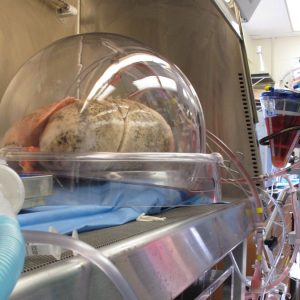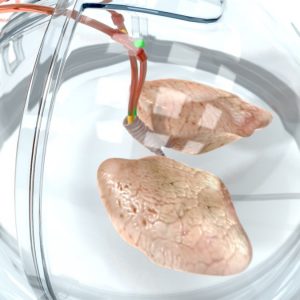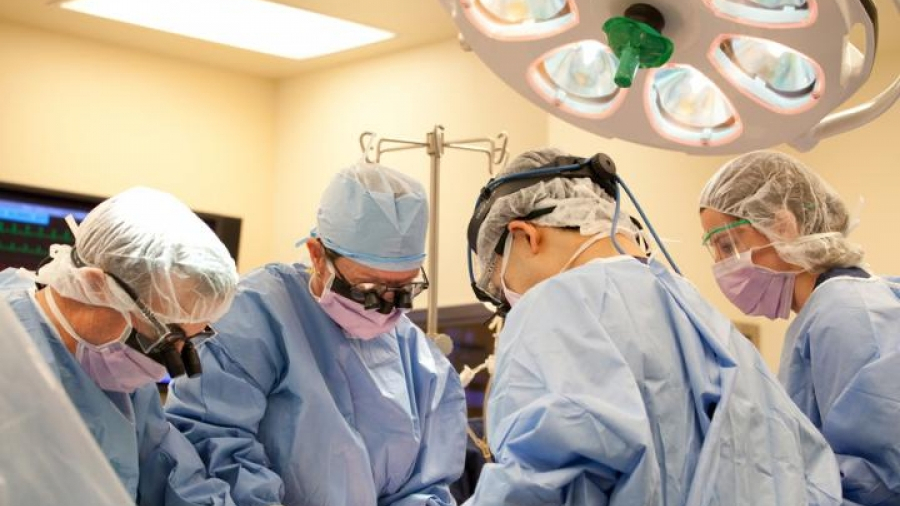Matt Bucketta is a lung transplant surgeon. He often watches as patients wait for an organ for a transplant but never receive it. About 80% of lungs from donors are not suitable for use. M. Bakketta and a team of researchers from Columbia University in New York demonstrated how they managed to restore damaged pig lungs to a level suitable for transplantation. The scientists argue that if their technique works just as effectively in humans, this discovery could significantly increase the number of suitable donor organs for transplantation.

In this recent photo, lungs donated as part of research at the University of North Carolina, Chapel Hill, sit inside a machine as they’re ventilated and tested to see if they are healthy enough to transplant. It’s a little-known twist of nature: Your lungs can live on for a while after you die. The air left inside keeps them from deteriorating right away like other organs. Now an innovative experiment aims to use that hour or more window of time to boost lung transplants by allowing donations from people who suddenly collapse and die at home instead of in a hospital. (AP Photo/Allen G. Breed)
“There is a severe shortage of organ donors,” says Bacchetta, director of surgery at Vanderbilt University in Nashville, Tennessee. “We… were looking for a way to expand life-saving treatment options for patients.”
The lungs are a very sensitive organ. They are exposed to the environment through our respiratory tract and are prone to various diseases. Potential donor lungs often become unsuitable for transplantation due to the presence of food particles, bile acids, gastric enzymes, etc. Such damaged lungs are not able to recover quickly enough to be used for transplantation. Bucketta wanted to find a way to give damaged lungs more time to recover and make them suitable for use as organ donors.
It took several attempts before Bucketta hit the right idea. After unsuccessful attempts to revive the lungs in an isolated system, he realized that the problem is that the organ does not work on its own, but is part of the body.
When you have a scratch or a sprained ankle, your body knows what it needs to do to heal the wound, but it’s always a complex job of the body, not a single organ system, Bacchetta explains. “It’s the same with the lungs – you need the work of the whole organism. But the only way to do that is to use a potential donor as a bioreactor.”
“We implanted an organ in a potential recipient that actually provided the necessary physiological environment and mechanism for ridding the body of waste,” he added.
Bucketta and his team first simulated lung injury by exposing one lung of an anesthetized donor pig to gastric juice (acid). The other lung served as a control. Six hours later, the acid caused damage to the lung. The researchers then removed the donor pig’s lungs and placed them in an organ chamber, a humidified and sterile closed bowl. The organ was connected to a ventilator and connected via tubes to major blood vessels in the lungs of another recipient pig. The pump delivered the recipient’s oxygen-rich blood to the donor’s disembodied lungs and returned the donor’s waste to the recipient’s body for destruction and elimination.
After so many failures, Bacchetta was not particularly hopeful of success: “I warned my colleagues in the lab that this is all a bit crazy, so it probably won’t work.” However, success awaited them – in fact, an external support system allowed the isolated lungs to recover. In doing so, the researchers aided the healing process by flushing stomach acids from the lungs and treating them with surfactant, a substance that helps the lungs expand and contract. The researchers reported in the journal Nature Communications https://en.wikipedia.org/wiki/Nature_Communications that the lungs recovered within three days and performed six times better than controls.
The findings suggest that the recipient’s “bioreactor” can be used to repair severely damaged lungs in humans, thereby increasing the number of donor organs suitable for transplantation. The researchers suggest that a similar technique can be used for organs such as the heart, liver and kidneys.
